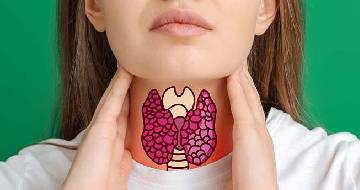Conditions We Treat
Adrenal disorders occur when the adrenal glands don’t make enough of the hormone cortisol. Cortisol helps break down carbohydrates, fats, proteins in your body. It also controls blood pressure and affects how the immune system works.
There are two adrenal glands in the body and are located near the kidneys. They work cooperatively with the hypothalamus and pituitary glands in the brain.
Adrenal disorders can be categorized as primary, secondary, or tertiary:
- Primary: Also known as Addison disease, this disorder occurs when the adrenal glands are damaged and don’t make enough of the hormones cortisol and aldosterone. This condition is rare and may occur at any age.
- Secondary: The pituitary gland doesn’t make enough of the hormone adrenocorticotropin and results in the adrenal glands not producing enough cortisol.
- Tertiary: The pituitary gland doesn't make enough adrenocorticotropin because the hypothalamus is not producing enough hormone. Cortisol is then not subsequently created by the adrenal glands.
Risk Factors
Disorders usually occur when the immune system attacks healthy adrenal glands. Other causes may include:
- Blood flow loss to the pituitary gland
- Cancer
- Fungal infections
- Genetic disorders of the endocrine glands
- Pituitary gland removal
- Pituitary gland tumors
- Radiation treatment
- Removal of parts of the hypothalamus
- Steroid use, including to treat certain medical conditions like asthma or arthritis
- Tuberculosis infection
Symptoms
- Darkened skin, usually on the face, neck, and back of hands
- Dehydration
- Diarrhea
- Dizziness
- Fatigue
- Food cravings, particularly for salty food
- Loss of appetite
- Low blood pressure
- Low sugar levels
- Menstrual cycle irregularity in women
- Muscle aches
- Nausea or vomiting
- Weakness
- Weight loss
With Addison disease, a bluish-black color around the nipples, mouth, rectum, scrotum, vagina, or other places may occur.
Diagnosis
An examination from a physician will be required, but there are tests that can assist in diagnosis, including:
- Blood tests
- Imaging –CT scan, MRI, ultrasound, X-rays.
- Saliva
- Tuberculosis
- Urine
Treatment
- Hormone treatment - cortisol
Addison’s disease can be deadly and is an extreme adrenal disorder. Treatment includes:
- Corticosteroids
- Intravenous fluids
- Other medication like mineralocorticoids
Symptoms of Addison disease can be severe, and this acute adrenal event is called an Addisonian crisis. This can occur when your body is stressed, such as from dehydration, fever, illness, surgery, or if the proper medication is not being taken, such as corticosteroids. Lack of treatment can result in:
Call your healthcare provider if:
- You have any kind of illness, especially a fever, vomiting, or diarrhea.
- You become pregnant.
- You need surgery.
Get medical help right away if you have sudden severe symptoms or an Addisonian crisis.
Disorders that impact the metabolism of calcium in the body include:
- Hyperparathyroidism – The parathyroid glands make too much parathyroid hormone
- Hypoparathyroidism – the parathyroid glands do not make enough parathyroid hormone
- Osteoporosis
- 22q11.2 Deletion Syndrome – Genetic disorder where a piece of chromosome 22 is missing and can cause several health conditions, including heart defects and developmental delays.
Diabetes is a condition that can affect anyone, from all walks of life, across all age levels. The condition causes higher than normal blood glucose levels, or blood sugar. Blood sugar is the main source of energy your uses and is derived from the food you eat. It’s also your brain’s main source of fuel. While the underlying causes of diabetes vary by type, the issues are due to how your body makes – or doesn’t make – insulin to properly process your body’s glucose levels.
Over time, having too much glucose can lead to significant health problems, including heart disease, blindness, kidney failure, and lower-extremity amputations. While there is no cure, there steps to manage diabetes and lead a healthy, active lifestyle.
Type 1 diabetes
In type 1 diabetes, the body does not produce the insulin needed to get glucose (energy) into the bloodstream. Usually diagnosed in children and young adults, type 1 diabetes can appear at any age. With proper care and use of insulin therapy in conjunction with other treatments, those affected can learn to manage the condition and lead long, healthy lives.
Type 2 diabetes
Type 2 diabetes is the most common form of diabetes. With type 2, the body does not make or use insulin properly. While medication may be necessary for some to control their blood sugar levels, others are able to manage through healthy eating and exercise. With nutrition and fitness being a key component to proper management, our team is here to support you in your journey to improved health and management of type 2 diabetes.
Gestational diabetes
Gestational diabetes develops in some women during pregnancy, and it is similar to type 2 diabetes. During pregnancy, your body makes hormones that make your body resistant to insulin. Most pregnant women make more insulin to keep their blood sugar levels normal, but some still cannot make enough insulin to keep their blood sugar levels normal during pregnancy, resulting in gestational diabetes.
Your Journey
Your journey to living a healthy life with diabetes starts with working with a primary care physician. They support you in managing the condition. A primary care physician can help provide regular and routine checkups and follow up with concerns or refer to specialists in case of more advanced needs.
As you learn to manage diabetes, you may benefit from working with other healthcare providers, including endocrinologists and dieticians. Your healthcare providers will work together to create a comprehensive care plan with you based on your needs.
What is excessive hair growth, or hirsutism?
Hirsutism is excess hair growth on the body or face. For women, the hair may grow in areas uncommon for them. This includes the upper lip, chin, chest, and back. It is due to an excess of hormones called androgens. Although all women naturally produce some androgen, high amounts can cause hair growth. It’s caused by an excess of male hormones called androgens. All women naturally produce small amounts of androgens. But high levels of this hormone can lead to hirsutism.
Risk factors
- Disorders of the adrenal gland, pituitary gland, or thyroid gland
- Genetics
- Hormone changes from menopause
- Insulin resistance
- Medicine to treat endometriosis or other medicines
- Polycystic ovary syndrome
- Steroid use, including anabolic steroids or corticosteroids
- Tumor on the ovary
What are the symptoms of hirsutism?
Symptoms can occur a bit differently in each person. They include darker or thicker hairs growing on parts of the body such as:
- Upper lip
- Chin
- Jawline
- Chest
- Back
- Buttocks
The symptoms of hirsutism can look like other health conditions. See your healthcare provider for a diagnosis.
How is hirsutism diagnosed?
Your healthcare provider will ask about your symptoms and health history. They will give you a physical exam. You may also have blood tests to check for increased androgen levels. These tests can also check for other problems that may cause excess hair growth.
How is hirsutism treated?
Treatment depends on personal preference. Hair growth causes no physical harm. The decision to remove or reduce hair varies from person to person.
Methods to remove or reduce unwanted hair include:
- This is a way to remove hair with thin blades moved across the skin. Hair will start growing back right away, so shaving needs to be repeated often.
- Depilatory lotion. This is a type of hair removal done with chemicals put on the skin. It softens hair above the skin so it can be wiped away.
- Hot or cold wax can be used to pull out hair from the root. This treatment needs to be done every 2 to 3 weeks.
- Chemicals can lighten the color of the hair and make it less easy to see.
- A very thin needle is put into a hair follicle. Electricity is sent through the needle. This damages the hair follicle. This method is done over several sessions. This can reduce and remove hair for months or longer.
- Laser hair removal. A special laser is pointed at the skin. The light from the laser is absorbed by color (pigment) in the hair and destroys the hair. This works best on people with dark hair and light skin. This method is done over several sessions. This can reduce and remove hair for months or longer.
- Medicated cream. Skin cream with eflornithine can slow hair growth. Results typically show up in 6 to 8 weeks. The hair will regrow in about 8 weeks if you stop using the cream.
Other medicines can reduce the hormones that cause hair growth. It can take 6 months or longer for you to see results from these medicines. This is because hair grows, rests falls out, and regrows in cycles that last for months. And not all hairs are in the same part of the cycle at the same time. Because of this, treatments that affect the hair you have now may need to be repeated over time. Medicines that can change hormones to affect hair growth include:
- Birth control pills. These are different kinds of hormone pills that prevent pregnancy. They can reduce the number of androgens in your body. Most women will notice a change in body hair growth when taking birth control pills.
- Antiandrogen medicine.This type of medicine can reduce your body’s androgen levels. Or it may stop the effects of androgens on hair follicles. The most common type is spironolactone. The medicines can cause birth defects, so a woman must use birth control while taking them.
Other factors that can lessen excess hair growth include:
- Treating another condition. Treating disorders of the pituitary gland, adrenal gland, or thyroid gland can lessen excess hair growth.
- Weight loss. In some women, losing weight can reduce androgen levels and cause hair growth to slow.
- Aging. Women age 30 and older have decreasing androgen levels. Hair growth may lessen over time.
What is hypoglycemia?
Hypoglycemia is when the blood sugar, or blood glucose, the level is too low. Glucose is the main source of fuel for the body with carbohydrates being the primary source of glucose. Hypoglycemia can be a complication of diabetes or another disorder or a sole condition within the body, but it is closely associated with diabetes.
Causes
- Diabetes medication
- Irregular food intake
- Other causes of hypoglycemia are rare, but it could occur in early pregnancy, alcohol or substance abuse, after extreme exercise, during prolonged food fasting, or from a tumor.
Symptoms
- Behavior changes
- Blurry vision
- Confusion
- Disorientation
- Dizziness
- Headache
- Irritability
- Nausea
- Rapid heartbeat
- Shakiness
- Sweating
Hypoglycemia can also occur during sleep. Some signs include:
- Confusion or fatigue after waking
- Nightmares
- Seizures
- Wet clothing
Diagnosis
- The ideal range of fasting morning blood sugar is 70 to 99 mg/dL (milligrams per deciliter). Blood sugar levels lower than 70 mg/dL are too low.
- Blood tests will determine blood sugar levels. It may be a complication of diabetes or an insulin reaction.
Treatment
To treat low blood sugar immediately, an item with concentrated sugar needs to be consumed:
- Candy
- Glucagon injection
- Glucose tablet
- Orange
- Raisins
It may also be recommended to:
- Avoid foods high in carbohydrates
- Eating small meals more often
- Exercise
- Frequent snacks
- Variety of healthy foods
Untreated hypoglycemia can cause fainting, and, in severe instances, can lead to a coma, seizures, or death.
Prevention
A diet of rice, potatoes, bread, cereal, fruit, and sweets will help prevent blood sugar levels to get too low, but there are a variety of ways:
- Diabetes medication
- Meal plans
What is a metabolic disorder?
Metabolic disorders are disorders that impact the distribution and absorption of certain nutrients like carbohydrates, fats, proteins in the body as a reaction following the regular metabolic process.
Symptoms
- Fatigue
- Seizures
- Skin color changing, such as jaundice
- Weight loss
Symptoms are usually characterized as acute, progressive, late-onset, and permanent.
Risk factors
- Genetic transmission
- Abnormal function of the liver or pancreas
Types of disorders:
- Acid-base imbalance
- Metabolic brain diseases
- Disorders of calcium metabolism
- DNA repair-deficiency disorders
- Glucose metabolism disorders
- Hyperlactatemia
- Iron metabolism disorders
- Lipid metabolism disorders
- Malabsorption syndromes
- Metabolic syndrome X
- Inborn error of metabolism
- Mitochondrial diseases
- Phosphorus metabolism disorders
- Porphyrias
- Proteostasis deficiencies
- Metabolic skin diseases
- Wasting syndrome
- Water-electrolyte imbalance
What is a pituitary gland disorder?
The pituitary gland is a gland at the base of the brain that produces a variety of hormones that impact different organs and parts of the body. This gland is often referred to as the master gland because it has control over most of the endocrine glands. When the pituitary gland is not functioning properly, various health conditions can arise.
When not enough growth hormone is created, for example, stature is stunted in a child, while if not enough luteinizing hormone is created in women, it can cause issues with ovulation, menstruation, and fertility.
Symptoms of a pituitary gland disorder
- Dizziness
- Headaches
- Libido loss
- Muscle loss
- Skin discoloration
- Vision problems
- Weight gain
Types of pituitary gland disorders
- Acromegaly – Too much growth hormone is created, which causes abnormal growth, and can be commonly referred to as gigantism in childhood. The most common cause is a benign tumor. Symptoms include swelling of extremities, protruding jaw, large parts of the face, thick body hair, deeper voice, joint pain, arthritis, increased size of organs, headaches, vision problems, sweat and body odor, weakness, irregular menstrual cycles, larger chest, enlarged thyroid, breast discharge, impotence.
- Diabetes Insipidus – The body does not make enough antidiuretic hormone or the kidneys do not respond to the hormone. The hormone assists in balancing the amount of water in the body. Symptoms include thirst, frequent urination, or dehydration. Treatment can include medication or fluids.
- Empty Sella Syndrome – Affects the part of the skull called the sella turcica, and the pituitary gland is flattened or too small. There may be no known cause in many instances, but it can be caused by injury, surgery, or radiation therapy.
- Hypopituitarism – The pituitary gland is not active, and it does not make enough hormones. Causes can include tumors, infections or inflammation, radiation treatment, surgery, brain injury, poor blood flow, or genetic or autoimmune diseases. Treatment can include hormone replacement therapy, surgery to remove a tumor, or radiation therapy.
- Tumors
What is a thyroid disorder?
The thyroid is a gland located in the upper chest or lower part of your neck and is an endocrine gland that produces hormones, which include thyroxine, triiodothyronine, and calcitonin. It helps maintain and control activity within the body, including how the body burns fat and calories. Disorders occur when the gland is not functioning properly.
Disorders include:
- Goiter or toxic nodular goiter – Enlarged thyroid gland. It can cause pain or difficulty breathing, speaking, or swallowing. A toxic nodular goiter can occur when a lump or nodule of the thyroid becomes overactive.
- Graves’ Disease – The most common form of hyperthyroidism, Graves’ disease is an autoimmune disorder involving the thyroid being overstimulated by antibodies. It can be hereditary, and it is commonly most found in young to middle-age women.
- Hashimoto's Thyroiditis – The most common type of thyroiditis, it may also be called chronic autoimmune thyroiditis. It occurs when the body creates antibodies that attack cells in the thyroid, which causes the gland to be inundated with white blood cells. It scars the thyroid, and it cannot make enough hormones. Risk factors include being female, between 30-60 years of age, heredity, and other autoimmune diseases, such as rheumatoid arthritis, or diabetes.
- Hyperthyroidism – More hormones are created by the thyroid than are needed. The body’s metabolism works at a faster rate, risk factors include over-use of medicine to treat an underactive thyroid, too much iodine in the diet, having a tumor in the pituitary gland, as well as advanced age, being female, pregnancy, past thyroid concerns, family history and other conditions such as diabetes. Symptoms include anxiety, nervousness, sweating abnormally, thinning of skin and hair, heart palpitations, hands shaking, high blood pressure, weight loss, abnormal bowel movements, insomnia confusion, and light sensitivity.
- Hypothyroidism – Not enough hormone is created by the thyroid, and it is the most common thyroid disorder. Risk factors include being female, being older than 60, family history, having past thyroid health problems, having other conditions like diabetes or arthritis, pregnancy, or an iodine deficiency. Symptoms include fatigue, sensitivity to the cold weather, voice changes, slowed speech, swelling, weight gain, dry or coarse hair, carpal tunnel in the hands, slow pulse, joint pain, confusion, and cramping.
- Thyroid Disorders in Women – As the thyroid assists in maintaining the proper bodily function, a woman’s body and health systems are adversely affected if thyroid conditions occur. These include bone health and osteoporosis, emotional and mental health patterns, pregnancy and postpartum health, reproduction, puberty, and menstruation, and menopause.
- Thyroiditis – Swelling or inflammation of the thyroid. This condition can be painless, but many times this condition does involve discomfort. It can be brought on by a virus, bacteria, radiation during treatment, after giving birth, or by drugs such as amiodarone, interferons, and lithium. Heredity can also be a factor. Symptoms include anxiety, irritability, insomnia, rapid heart rate, weight loss, fatigue, sweating or heat intolerance, increased appetite, and shaking or tremors.
Diagnosis
- A medical provider will need to perform an exam, and blood tests may be needed, or ultrasound or scan.
Treatment
- Treatment depends on the condition, but some may involve:
- Medicine, including beta-blockers
- Radioactive iodine
- Steroids
- Surgery
- Thyroid hormone replacement therapy
What is thyroid cancer?
The thyroid has two main types of cells: C cells and follicular cells. Cancer develops from the rapid growth of these cells. Tumors and nodules, or lumps, can grow. Not all are cancerous, but they can spread into nearby tissues and other parts of the body.
Nodules are usually benign, or noncancerous, and can occur at any age but mostly in older adults. They made up of cysts filled with fluid. Some don’t need to be treated, but many do as adverse symptoms develop.
Types of thyroid cancer
- Anaplastic
- Differentiated
- Medullary
Anaplastic cancer is aggressive carcinoma and is rare. It may develop from existing cancer, and it may be referred to as undifferentiated because it does not resemble other normal thyroid cells. It can spread quickly and is difficult to treat.
Differentiated cancer resembles normal thyroid tissue and usually develops from follicular cells. It is the most common type of thyroid cancer. Most differentiated cancer is papillary cancer that grows slowly and from one lobe of the thyroid gland. The lymph nodes in the neck usually are impacted if it spreads to that part of the body, and it can be treated and rarely causes death. Follicular cancer is a type of differentiated cancer that usually occurs where iodine is not found enough in someone’s diet, while Hurthle cell cancer is a difficult differentiated form of cancer to treat.
Medullary cancer occurs from c cells, which makes calcitonin, a hormone that aids in controlling calcium in the blood It can spread to various organs, including the liver and lungs, and it can be both an inherited cancer or can be sporadic and not tied to genetics.
Other types of thyroid cancers include parathyroid cancers, which affect small glands attached to the thyroid.
Risk factors
- Age (usually between 25-65 years old)
- Asian descent
- Female
- Genetics and history within the family of the disease
- Iodine deficiency
- Obesity
- Radiation treatment
Diagnosis
- A medical provider can help detect swelling or lumps or nodules, particularly in the neck. Other methods include:
- Biopsy
- Blood tests to detect proper levels of certain hormones to check thyroid function, including thyroid-stimulating hormone, thyroid hormones, thyroglobulin, calcitonin, and carcinoembryonic antigen
- CT scans
- Genetic testing, such as for those with a family history of medullary thyroid cancer
- Laryngoscopy to examine the vocal cords.
- Magnetic resonance imaging, or MRI
- Positron emission tomography, or PET, scan
- Radioiodine scan
- Ultrasound
- X-ray
Treatment
- Beam radiation therapy – high-energy rays destroy cancer cells or slow growth.
- Chemotherapy – drugs are injected into the body or taken orally and travel through the bloodstream to reach cancer cells.
- Radioactive iodine therapy – radiation can destroy cancer cells in the thyroid that absorbs iodine.
- Surgery – lobectomy, lymph node removal, thyroidectomy
- Targeted drug therapy – drugs are used to target specific changes in the body’s cells that become cancerous, which are called kinase inhibitors. These drugs block a protein inside cells from relaying signals that cause it to grow.
- Thyroid hormone therapy – drugs, including levothroxyine, are used to replace natural hormones and maintain metabolism









